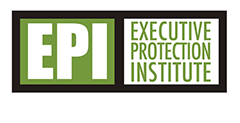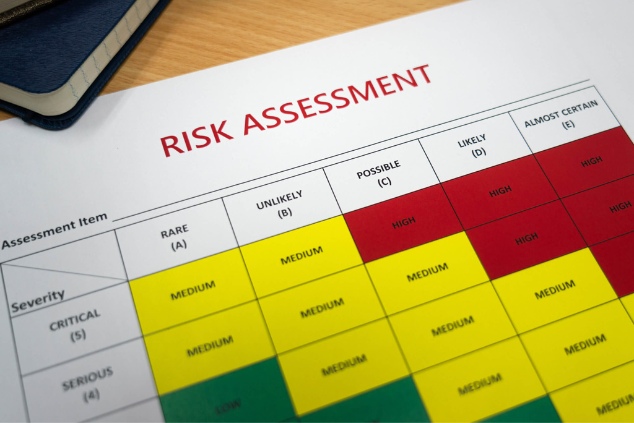A risk assessment provides a systematic approach to identifying, analyzing, and evaluating potential threats and vulnerabilities, enabling security professionals to develop effective strategies to mitigate them. This article aims to provide an in-depth understanding of risk assessment in the context of executive protection, highlighting its significance and benefits.
In the field of executive protection, a risk assessment refers to the systematic process of identifying, analyzing, and evaluating potential risks faced by high-profile individuals. By assessing and understanding these risks, security professionals can develop strategies to mitigate them effectively and provide a secure environment for their clients.
For professionals in the executive protection industry, a risk assessment is a fundamental aspect of their work. In this way, they can gain a comprehensive understanding of potential threats and vulnerabilities to make informed decisions regarding protective measures. By conducting thorough risk assessments, professionals can proactively address potential risks and provide their clients with the highest level of security.
Understanding risk assessment offers numerous benefits to professionals in the field of executive protection. It enables them to:
- Identify and prioritize risks: By conducting risk assessments, professionals can identify and prioritize potential risks based on their likelihood and potential impact. This allows for a targeted and efficient allocation of resources and efforts.
- Develop effective strategies: Risk assessments provide valuable insights into the nature and characteristics of identified risks. This knowledge helps professionals develop tailored and effective strategies to mitigate the risks and enhance the overall security posture.
- Stay ahead of emerging threats: Risk assessment involves continuously monitoring and reassessing potential risks. This allows professionals to adapt their security strategies to changing environments and stay ahead of emerging threats and trends.
Key Components of a Risk Assessment
One of the key aspects of risk assessment is its proactive approach. Rather than waiting for threats to materialize, risk assessment allows professionals to identify potential threats in advance. This proactive approach enables them to take preventive measures and reduce the likelihood and impact of potential risks.
Other key components of risk assessment are threat identification and analysis, vulnerability assessment, consequence analysis, and risk evaluation and prioritization.
Threat identification and analysis involves identifying potential threats and analyzing their nature, characteristics, and potential impact. It helps executive protection professionals understand the specific risks faced by their clients.
Vulnerability assessment aims to identify weaknesses and vulnerabilities in the existing security measures. By assessing vulnerabilities, professionals can develop strategies to strengthen protective measures and reduce the risk of exploitation.
Consequence analysis involves evaluating the potential impact of identified risks. Agents can prioritize risks and allocate resources by understanding the potential consequences.
In the risk evaluation and prioritization stage, risks are evaluated based on their probability of occurrence and potential impact. Prioritizing risks allows professionals to focus their efforts and resources on the most critical areas, ensuring effective risk management.
Tools and Methodologies
Some of the most used tools and methodologies in risk assessment are security audits and surveys, threat modeling and scenario analysis, and historical data analysis and trend identification.
Security audits and surveys provide a comprehensive assessment of existing security measures and identify areas for improvement. These tools help identify potential vulnerabilities and recommend appropriate countermeasures.
Threat modeling involves creating hypothetical scenarios to assess vulnerabilities and potential threats. By analyzing various scenarios, professionals can better understand the risks and develop effective strategies to counter them.
Additionally, analyzing historical data helps identify trends, patterns, and emerging threats. Professionals can adapt their strategies to evolving security environments by staying informed about past incidents and trends.
The Role of a Risk Assessment
Risk assessment plays a fundamental role in guiding security planning and resource allocation. By systematically identifying and evaluating risks, officers can develop well-informed security plans tailored to the specific needs of individuals under protection. This enables effective decision-making regarding the allocation of resources and the implementation of appropriate protective measures.
Risk assessment also provides valuable insights into potential risks, enabling professionals to make informed decisions regarding selecting and implementing protective measures. By understanding the nature and characteristics of identified risks, professionals can choose the most appropriate and effective strategies to mitigate them. It allows professionals to identify and understand potential threats by systematically analyzing their nature, characteristics, and potential impact. This knowledge enables professionals to effectively develop targeted strategies to mitigate the identified threats.
Once potential threats are identified through risk assessment, agents can develop and implement preventive measures to mitigate the risks. These measures may include physical security measures, technology solutions, operational protocols, and training programs aimed at reducing the likelihood and impact of potential threats.
More than this, risk assessment enables professionals to adapt their security strategies to changing security environments. By continuously monitoring and reassessing risks, professionals can identify emerging threats and trends and adjust their strategies accordingly. This adaptability ensures that security measures remain effective in the face of evolving risks.
Threat assessment allows professionals to stay ahead of emerging threats and trends by continuously evaluating potential risks and monitoring the security landscape. By proactively identifying and analyzing emerging threats, professionals can develop strategies to counter them and ensure their clients’ continued safety and security.
Best Practices for Conducting Risk Assessments
A structured framework is essential for conducting effective risk assessments. It provides a systematic approach, ensuring consistency and reliability in the assessment process. A well-defined framework helps professionals in the executive protection field conduct comprehensive and thorough risk assessments.
Developing an effective risk assessment process involves establishing clear objectives, defining roles and responsibilities, and implementing standardized procedures. Guidelines should cover all stages of the risk assessment process, including threat identification, vulnerability assessment, consequence analysis, risk evaluation, and prioritization.
Furthermore, collaboration and information sharing are vital for conducting thorough risk assessments. Involving relevant stakeholders, such as security teams, intelligence analysts, and executives, allows for a comprehensive understanding of potential risks. Different perspectives and expertise contribute to a more holistic and accurate risk assessment.
To involve relevant stakeholders and gather necessary information, professionals should establish open lines of communication and create a collaborative environment. Regular meetings, interviews, and information-sharing sessions can provide valuable insights and contribute to a comprehensive risk assessment.
But remember that risk assessments should not be treated as one-time endeavors! Regular review and update of assessments are essential to ensure their ongoing relevance and effectiveness. Security environments are dynamic, and risks can evolve over time. By periodically reviewing and updating their assessments, professionals can adapt their strategies accordingly and maintain a proactive approach to risk management.
EP professionals should establish a schedule for regular reviews and updates to maintain an ongoing risk assessment process. They should also stay informed about the latest trends, emerging threats, and best practices in the field. By continuously learning and improving, professionals can enhance their risk assessment capabilities and provide their Principals with the highest level of security.
The Take-Away
In conclusion, a risk assessment is fundamental to effective executive protection strategies.
By understanding and proactively addressing potential risks, professionals in the field can provide a secure environment for high-profile individuals. This article has explored the concept of risk assessment, its components, tools, and methodologies. Furthermore, it has highlighted risk assessment’s critical role in security planning, threat mitigation, and adapting to dynamic security environments.
By applying the knowledge gained, professionals can enhance their skills in executive protection and ensure the safety of those under their protection. Embracing risk assessment is the key to developing effective executive protection strategies and prioritizing safety and security in an ever-evolving world.
Click on the link below and check out our course on Special Event Security Risk Assessments and see how the Executive Protection Institute can boost your EP career to the next level.


